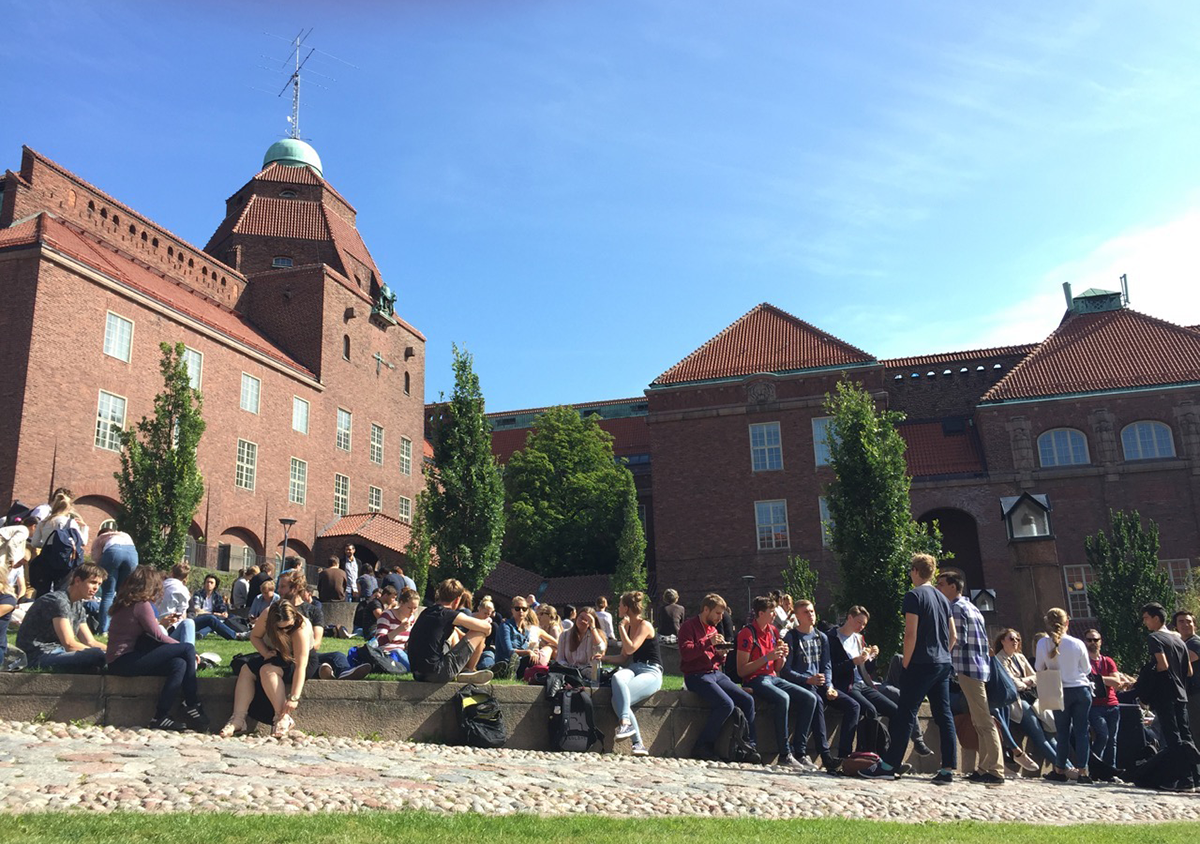Ela develops interface and design systems for a major Swedish manufacturer of commercial vehicles
Ela Yudhanira graduated from the master’s programme in Interactive Media Technology in 2018. She now works as a User Interface Developer at Scania in Stockholm.

Hi Ela, what have you been doing since leaving KTH?
Right now, I am working at Scania, a major Swedish manufacturer of heavy vehicles such as buses and trucks. I started working with Scania during my thesis work in 2018 and continued working with the company after graduation. I work as a UI (User Interface) Developer in a group that is responsible for implementing a coherent user interface at an enterprise level.
As a UI Developer, I work mainly with the web development process. My group is responsible for creating the guidelines for the interface and the design system for most of the internal and external applications in Scania. We create a framework that can be used by other developers in the company so that every application displays a consistent company branding. There is always a challenge in my everyday work. Implementing a coherent UI and a consistent UX (User Experience) in a big corporate company is not an easy task. We need to provide an architecture that could work with all projects that use different technologies but, at the same time, we need to make sure that our framework works in different use cases and different environments.

Why did you choose this programme at KTH?
I have always had a passion for user experience and interaction design. At the same time, I also love web programming, and anything related to web technology. The Master’s Programme in Interactive Media Technology was perfect for me since it offered me the possibility to learn about the practical and theoretical basis to create interactive products.
Other than that, I chose KTH because it is located in Stockholm, a home for innovation and technology. The digital industry grows very quickly in Sweden. Technology is used and implemented everywhere. From the autonomous transport solution to a smart pet door that could detect your pet’s activity. The existence of many innovative companies attracted me to study in Sweden and get inspired by the creative culture in the industry.

And what were your biggest takeaways from your studies?
I had a background in Informatics Engineering before KTH, and studying this programme completed my knowledge from the design perspective. I learned not only how to design digital products, but also how to evaluate them. It is very useful for me since I work a lot with digital interfaces. Coming from an engineering background with emphasis on logical and mathematical thinking, the courses helped me practice design thinking for creative problem-solving. It encouraged me to focus on the people, why we create a product, which leads to better digital products. Besides, in the classroom, I met a lot of experts from the industry. I learned a lot of practical knowledge within the digital products area from the sessions with guest lecturers. KTH not only offers a classroom education but also connect the students with the industry. There were also a lot of project-based courses, where students spent 50 percent of their time on theory or paper reading, and 50 percent creating a digital product. This way of learning was really interesting, and I really enjoyed my time getting involved in many different projects with different people. It helped me improve my personal skills working with different people from different culture and, in addition, the projects improved my portfolio as well, which was very useful when applying for a job.

What were the best aspects of your studies at KTH?
I really enjoyed my time studying at KTH. The most interesting thing was that I acquired knowledge about new technologies and how to work with them. KTH provides high-quality research within the area of human-computer interaction. This is very important because technology changes very quickly. It is important that we have knowledge so that we can make our contribution and create our own innovation.
My best memory is when I could spend a lunchtime with my classmates in the KTH campus main courtyard. There is a big courtyard in the middle of the main campus where students usually spent their time outside in the summer. The campus buildings and environment are really nice. It felt relaxing when we had a lot of work - we could just sit outside and lay on the grass enjoying the sun. When I remember these times, I feel nostalgic and miss the good times I had with my classmates.

What are your plans for the future?
My plan is to continue working within user interface and digital products. There are many challenges ahead in the place where I am working right now. This is an opportunity for me to develop my skills and establish a more professional portfolio. I want to make a valuable contribution to the development of a coherent UI across Scania. And in the future, I hope I can take back all the values I have learnt in Sweden to my home country, Indonesia, and improve the culture and innovation in the IT industry in Indonesia.

What would you say to a student thinking of applying for this programme?
Most of the courses in this programme have a strong emphasis on the practical projects which requires students to get involved in research conducted at KTH or at external companies. This offers opportunities to expand networks and, of course, to be at the frontline of technology. You will never get bored with class lectures because there are many activities with projects and guest lecturers.
